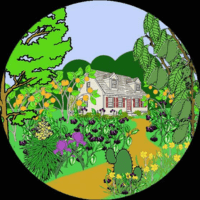Sea Buckthorns (Sea Berry) — How to Grow a Superfruit!
Sea Buckthorns human health benefits are OFF-THE-CHART. And, it’s a highly versatile shrub. However, Sea Buckthorn oil is what this plant is most known for. The oil is derived from the fruit’s seed.
The fruit has many essential fatty acids and 7 times the vitamin C of citrus. Fatty acids include omega-3, omega-6, omega-7 and omega-9. Sea Buckthorns fruit provide MANY important bioactive compounds (BAC). Buckthorn health benefits are in the fruit, seeds, leaves, and stems, according to NIH medical literature!
Sea Berry (it’s other common name) is a HEPPY™ plant. They need NO water, show NO disease, grow compact, are nitrogen fixing, and grows in any soil. it tolerates ocean salt spray and temp’s to -40°F. it grows compact and other varieties that grow tall. it DOES need full sun — at least 6 hours of full sun.

Sea Buckthorns Grow Guide on ONE webpage!
On this page:
1. Sea Buckthorns Fact Sheet.
2. Buckthorns in landscaping and garden ideas.
3. Eating fresh Sea Buckthorns’ fruit and its medicinal qualities.
4. Sea Buckthorn benefits.
5. Commercial viability.
6. Sea Buckthorns Guide for Care and Maintenance.
7. Propagating Sea Buckthorns.
8. Varieties that we grow organically right now!
________________________________________
see our list of 400 edible plants
YouTube channel (please subscribe)
YouTube channel JUST for BUCKTHORNS (please subscribe)
Sea Buckthorns Fact Sheet
common names: Sea Berry, Seaberry, Sea Buckthorn, Sea-Buckthorn, Buckthorn, Purging Thorn, Sallow Thorn, Sanddorn, Sceitbezien, Seedorn, Argasse, Argousier, Espino Armarillo, Espino Falso, Meerdorn, Star-Bu, Tindved
Zone: 3 to 8
Height: 8 to 12 feet
Native: Europe and Asia
Bloom Time: March – April
Bloom Color: Yellow-green (female)
Fruit Maturity: September – October
Self-fertile: no (dioecious)
Sun: full sun (at LEAST 6 hours of full sun)
Water: medium
Soil: forgiving
Maintenance: low
Growth Rate: fast
Deciduous or evergreen: deciduous
Edible¹: yes (more information is below)]
Medicinal²: yes (discussed below)
Commercial viability: strong (discussed below)]
Family / Genus: Elaeagnaceae / Hippophae
Remarks: nitrogen fixing; is a superfruit; fruit provides health fatty acids!!; grows in nutritionally poor soil, wet soil and can tolerate drought; tolerates maritime exposure; a forgiving plant; fruit holds on the plant well into Fall
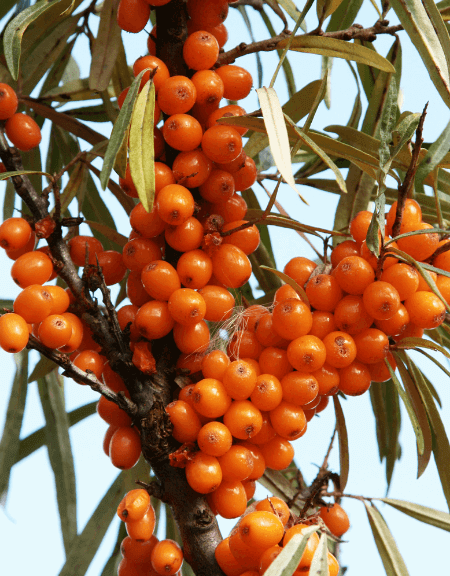

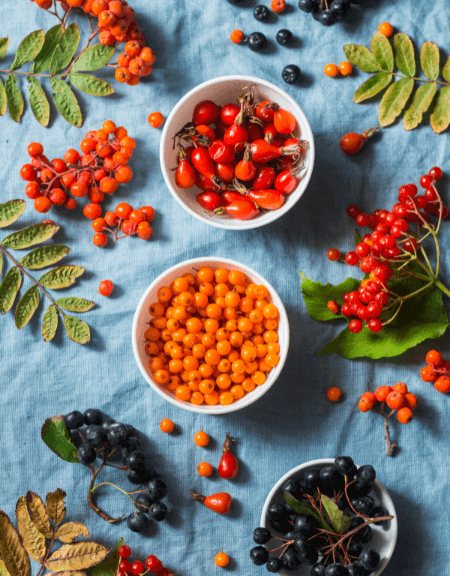
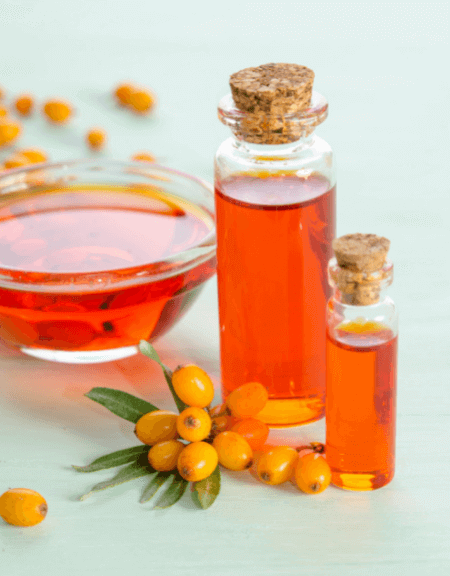
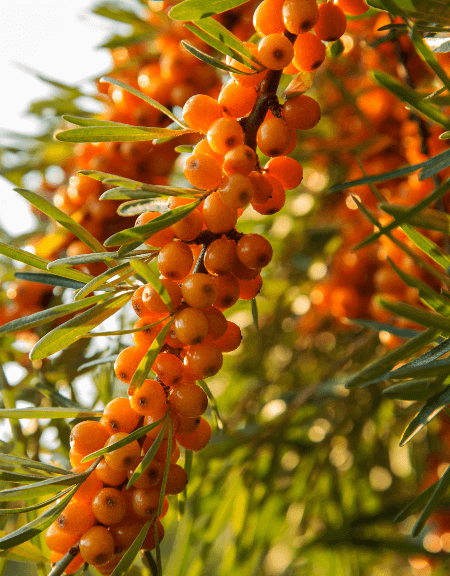
Sea Buckthorns in landscaping and garden ideas
Sea Buckthorns are not commonly grown. people simply are not aware that they’re easy to grow. they only need full sun. and, you will need a male and female plant if you want fruit.
Landscape Architecture
in landscape architecture, Sea Buckthorns need sun and a little space. they grow quick but stay compact. they’re hardy to -40°F yet yet, tolerates heat and requires full sun. also, Sea Buckthorns tolerate salt spray along coastlines.
Sea Buckthorns are used as an ornamental hedge or a single accent plant. it is an attractive plant with silverish colored leaves . leaves develop off strong and erect branches. prune to shape — Sea Buckthorns can pruned to any shape. it fits in any backyard and front yard landscaping design.
Hippophae rhamnoides is a nitrogen fixing species. therefore, it is can be used for land reclamation, and as nurse crops. it’s an excellent companion plant to plants that require a lot of nitrogen.
it is an excellent, reliable and low-maintenance fruiting shrub. mindfully select its location.
Garden Ideas
find a sunny location and let your imagination go!! grow Sea Buckthorns for ornamental effect or for fruit.
ornamentally: Sea Buckthorns are not self-fertile. therefore, growing ONLY male plants or ONLY female plants will provide a silvery, drought resistant zero-care plant.
NOTE that female plants are more dependable than male plants. young male plants require a LOT more care to get established (here at HEPPY™)
for fruit: you will need a male and female plant. there are MANY varieties of female Sea Buckthorns. we grow 5 of the best varieties at HEPPY. please follow their progress. the nursery One Green World appears to have the best selection..
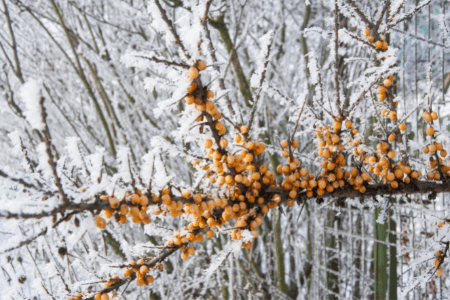
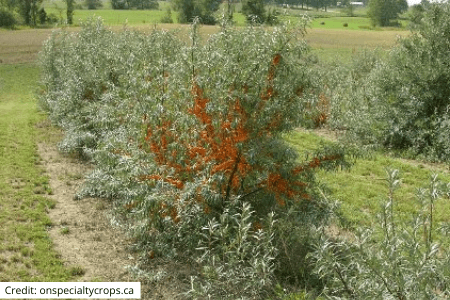
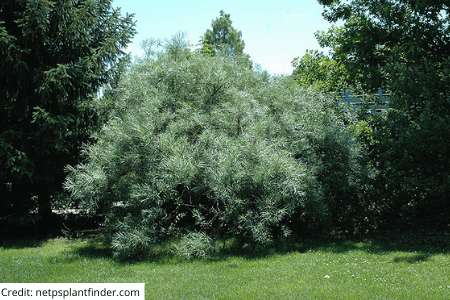
Sea Buckthorns Fruit — How Sea Buckthorns are Eaten and Used Medicinally
1, 2 HEPPY cannot take any responsibility for any adverse effects from the use of plants. Always seek advice from a professional before using a plant for food or medicinally. This information is intended for educational purposes only and should not be considered as a recommendation or an endorsement of any particular medical or health treatment.
Edible fruit
the Sea Buckthorn has a “Wow” factor. The nutritional and medicinal value of Sea Buckthorn (Sea Berry) is largely unknown in North America.
the fruit are berry-like. ripe Sea Buckthorn (Sea Berry) fruit have a citrusy ‘pop’. some varieties are sweet, some are tart and other are a mix, sweet-tart.
‘Golden Sweet’ is a German selection with large and very sweet fruit.
time of fruit ripening is cultivar-specific. picking Sea Buckthorn fruit ranges from July to November (Northern Hemisphere). Sea Buckthorn is high yielding and consistently productive.
Recipes
recipes for Sea Buckthorn include jams, muffins, vinegar and more!
Sea Buckthorn juice and Sea Buckthorn Oil is highly prized. however, recipes are dependent on the variety of plant. fruits range from sweet to tart, depending on the variety.

Medicinal Plants and Herbs — medicinal qualities
1, 2 HEPPY cannot take any responsibility for any adverse effects from the use of plants. Always seek advice from a professional before using a plant for food or medicinally. This information is intended for educational purposes only and should not be considered as a recommendation or an endorsement of any particular medical or health treatment.
the health and medicinal qualities of Sea Buckthorn are well known outside the States (were we spend more $ on health care then any other country 🙁
The nutritional and medicinal value of Seaberry is largely unknown in North America, but has been known and exploited in Eurasia for centuries. The Sea Buckthorn industry has been thriving in Russia since the 1940s, when scientists there began investigating the biologically active substances found in the fruit, leaves and bark.
the “characteristic that makes sea buckthorn unique is the qualitative and quantitative composition of its fatty acids, particularly the presence of the fatty acid omega-7 group, higher than in any other plant.” (NIH / PubMed, “The impact of sea buckthorn oil fatty acids on human health”).
- Palmitoleic acid (PA) is an omega-7 monounsaturated fatty acid very uncommon within the plant kingdom. Consequently, it is very difficult to introduce it in the human diet through vegetable food sources. Sea Buckthorn is one of the few plants that present this fatty acid.
- Oleic acid (OA) is a monounsaturated omega-9 fatty acid. Seed and soft parts of the Sea Buckthorn are rich in oleic acid. an advantage of OA is its resistance to oxidation. the proportions of OA in both parts are 13–19% in seed oil and 12–33% in pulp oil.
- α-Linolenic acid (ALA) is an essential fatty acid (unsaturated omega-3). it must be acquired through diet. it is found mostly in Sea Buckthorn Oil (oil from the seed). it is also present in the soft parts of the berries. ALA has many important roles in the human health, including support for the transmission of neuronal signals.
- Linoleic acid (LA) is another essential fatty acids. the European Food Safety Authority (EFSA) authorized a health claim stating that LA and ALA are needed for the normal growth and development of children.
- γ-Linolenic acid (GLA) is linked to LA. GLA fatty acid is an omega-6, which has several positive effects. Oils rich in GLA are reported to have positive benefits on skin conditions such as dermatitis and eczema, rheumatoid arthritis, pre-menstrual syndrome and the prevention of heart diseases. Furthermore, it improves blood circulation, which is important for the nourishment and oxygenation of the skin. it removes excess toxins. GLA has the capacity to protect skin against infections, counteract allergies, relieve inflammations, and slow down the ageing process.
During the Cold War, East Germany used Sea Berry as a healthful substitute for orange juice. The fruit is also unique for its oil content, which is used as a treatment for burns and skin diseases as well as for ulcers and other illnesses. You will often see Sea Buckthorn as an ingredient in many nutritional supplements and cosmetics.
commercial viability of the Sea Berry (Sea Buckthorn)
the Sea Buckthorn has a “Wow” factor. i’ll say it again! the marketing has been done for YOU! commercial viability is off-the-chart.
Farmers' market or cottage food industry
this is a special fruit. YOU can be ahead of the curve by producing this highly sought after fruit. and Sea Buckthorn Oil is highly prized.
Commercial or private landscaping
high nutrient value, nitrogen fixing, disease-free, grows in any soil including poor soil. hedge to desired shape and many varieties to choose from (including those that grow no more than 6 feet if not pruned). grows in full sun, hardy to -40°F and tolerates salt spray along coastlines. they are largely resistant to spring freeze damage. finally, Sea Buckthorn are high yielding and consistently productive.
HEPPY™ see ‘a million’ ways YOU can use Sea Buckthorn in commercial and landscaping applications.

Caring for the Sea Buckthorn: growing, pruning and harvesting
Sea Buckthorns (Sea Berry) were planted in 2021!! check-out this video of us unboxing out beauties (along with unboxing a SURPRISE plant!).
Pruning the Sea Buckthorn
we can see that pruning will be simple. the leaves are and stems are fine. Sea Buckthorn are so light sensitive that lower branches become unfruitful and die out entirely as they are shaded by higher foliage.
pruning when dormant: prune excess limbs. Sea Buckthorn are shrubs. therefore, it’s a bushy plant. but trim branches so you encourage growth from the center of the plant outward. also, trim lower, unproductive limbs if fruit production is desired.
pruning while growing: prune to shape. this bush can be shaped to desired height and form. begin shaping by late or early summer.
Harvesting Sea Buckthorn Fruit
picking Sea Buckthorn fruit is similar to picking Blackberries & Raspberries.
Propagating Sea Berry: cuttings, division, grafting, layering and seeding
Sea Buckthorn Propagation is well described by Bill Schroeder. he’s the lead researcher at Agriculture and Agri-Food Canada (AAFC) and is a North American expert on Sea Buckthorn.
technical information this section from his report on Propagation Methods and Procedures . Schroeder, W.R. 2017. Seabuckthorn Propagation. Agriculture and Agri-Food Canada, Indian Head, Saskatchewan, Canada.
volunteer at HEPPY™ to move this project along. we’d LOVE to cultivate more Sea Buckthorn!!
Sea Buckthorn ROOT Propagation
Sea Buckthorn have a vigorous root system. they “sucker”. that means roots spread out and then send shoots to the soil-surface. carefully digging up that root system provides roots and vegetative growth! Mint plants spread this way, but spread much faster than the Sea Buckthorn.
Spring is the ideal time. as gardeners, we recommend at least 10-12 inches of vegetative growth (growth above ground). dig-down below the growth and find ample roots. what’s ample roots? think of a potted plant — think of the ratio of root-to-plant. a LOT of root is FAR more important than a lot of vegetative growth.
HEPPY™ suspects that this is the easiest form of propagation.
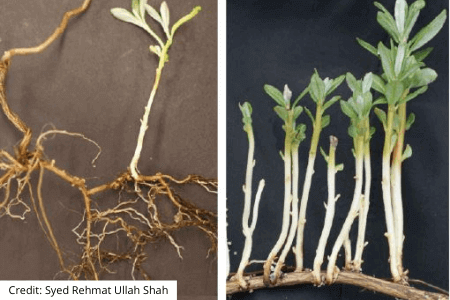
Sea Buckthorn SEED Propagation
seed processing to directly sow seeds: this is a HEPPY technique that works well. particularly the Sweet Scarlet Goumi, Pawpaw and Persimmon. plant fresh seeds in late fall (September in North America). be sure to remove the fruit-flesh from around the seed. seeds will germinate the following spring. allow seedlings to grow 1 year. transplant seedlings in late fall (a year after planting fresh seeds). transplant to a new location or pots.
seed processing to store seeds: harvest fruit in late August to midwinter. extract the seed and allow seeds to air dry. technically, dry Sea Buckthorn seed until the moisture content is 6%. and that’s ONLY the start 😉 gathering, processing and storing seeds is a tedious process that requires a lot of time.
Sea Buckthorn SOFTWOOD and HARDWOOD Propagation
propagating Sea Buckthorn with softwood cuttings has a very high success rate. hardwood cuttings has a lower rooting success rate (Schroeder, W.R. 2017).
harvest softwood cuttings in late June to mid-July, when shoots have stopped growing and are slightly more ridged & woody. cut softwood 6 inch (15 cm) long with a clean tool. remove enough of the lower leaves so none will be in contact with the rooting medium or buried after planting. use a rooting hormone and place softwood cuttings in a rooting medium. 1-to-1 mix of perlite-to-vermiculite is recommended. have at least two leaf nodes below the surface of the rooting medium. finally, a mist bed will reduce transplant shock. manually mist cuttings as frequently as possible if you don’t have a misting bed 😉
Sea Buckthorns growing at HEPPY
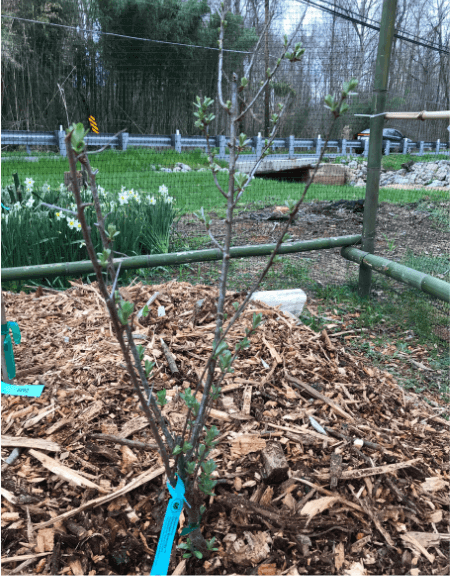
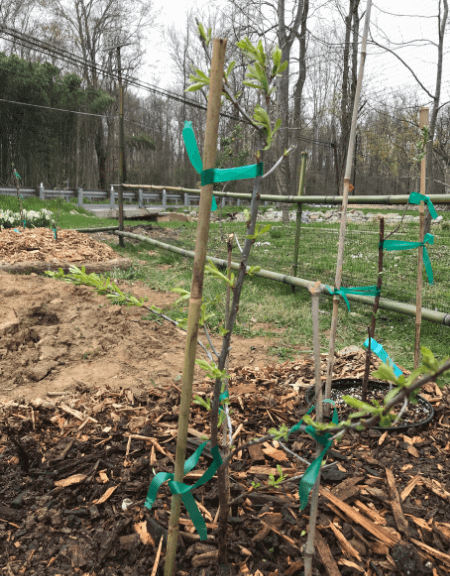
there are MANY varieties of Sea Berry (Sea Buckthorn). we unboxed several in this video!
these cultivars arrived at HEPPY™ in 2020-2021. this is what makes them special:
Golden Sweet
known for its large and very sweet fruit. medium size shrub. vigorous growth here at HEPPY!
Sirola
unusually sweet fruit, large bright red-orange fruit, fits in any garden*, ripens early, & Siberian and German parents, It’s great for the home garden.
Klim’s Prize
cultivated by Klim Arbakov, grows compact and upright, and bears high quality sweet and large bright orange berries.
Orange Energy
prized for its LARGE crops of bright orange, flavorful and vitamin-rich berries. crops are so heavy that in September the plant essentially turns orange.
References
One Green World: Sea Berry
Missouri Botanical Garden: Hippophae rhamnoides
Schroeder, W.R. 2017. Seabuckthorn Propagation. Agriculture and Agri-Food Canada, Indian Head, Saskatchewan, Canada
University of Wisconsin, Uncommon Fruit. Observations from Carandale Farm, Seaberry (Sea Buckthorn), Hippophae rhamnoides
Root system of seabuckthorn (Hippophaë rhamnoides L.) Morphology, metabolism and gene expression. Doctoral Thesis. Syed Rehmat Ullah Shah
